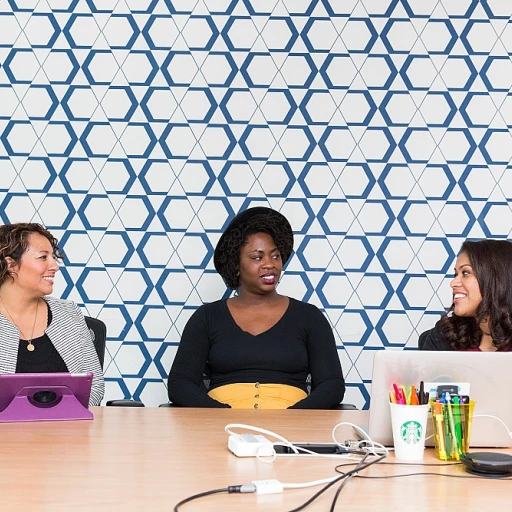
Understanding Inclusive Diversity in Design
Fostering a Genuine Embrace of Diversity
In today's rapidly evolving design landscape, inclusive diversity has become a cornerstone. It's no longer just a buzzword but an essential lens through which projects are evaluated and executed. Embracing inclusive diversity is an ongoing commitment to acknowledging and celebrating the rich tapestry of cultural experiences within design practices. This commitment ensures that the products and environments we create resonate with broader audiences and foster a sense of belonging.
Designers often find themselves at the intersection of creativity and societal responsibility. It's their challenge to create solutions that not only meet practical needs but also touch on the emotional and cultural dynamics of diverse communities. This involves recognizing the multifaceted dimensions of identity, which can encompass race, ethnicity, gender, socio-economic status, and varied abilities, among others.
The key lies in crafting experiences that are reflective of and sensitive to these diverse identities. This becomes especially relevant in digital spaces, where we have a wide reach and potentially significant impact. If you're curious about the pivotal role of accessibility in driving inclusivity and how it intersects with successful projects, explore more on how accessibility is key to inclusion.
A comprehensive approach to inclusive design considers not only the immediate user base but also the broader social elements that influence design usage. It's about weaving together every thread of culture and identity to create a cohesive and representative output. As we proceed further, understanding the importance of cultural sensitivity and the practicalities of designing for accessibility will unfold the layers of this complex yet crucial aspect of design.
The Role of Cultural Sensitivity
Sensitivity in Design: A Key Component
In the realm of inclusive design, cultural sensitivity stands as a pivotal factor. It's not just about understanding diverse cultures, but about embedding respect and attention to unique cultural nuances in every design project. This approach asks for a conscious effort to tailor products and experiences that resonate with a broad audience.
Cultural sensitivity necessitates a collaborative approach. Designers must engage with multiple perspectives to create solutions that are both universal and personal. Such collaboration ensures that cultural representations are authentic and genuine, avoiding stereotypes or generalized assumptions.
This principle extends beyond traditional design aspects and encompasses new, adaptive methodologies. For instance, the choice of imagery, language, and symbols in a digital interface should mirror cultural preferences and values. Understanding contextual appropriations is crucial to avoid miscommunication or unintentional offense.
Investing in research and engaging with cultural consultants or diverse community members can greatly enhance the validity and efficacy of a design. Projects benefit from audacious thinking and innovative strategies which weave inclusivity into the entire production cycle.
For those embarking on making their digital spaces more inclusive, a resource such as making your site accessible highlights the importance of integrating accessibility and cultural sensitivity into the core of digital design.
Designing for Accessibility
Creating Designs Accessible to Everyone
Designing for accessibility is not just a legal requirement but a moral imperative that ensures everyone, regardless of ability, has equal access to information and functionality. It strives to eliminate barriers that prevent interaction with or access to websites, digital tools, and technologies. As design professionals, prioritizing accessibility in your projects can demonstrate commitment to inclusive diversity, a crucial aspect of socially responsible design. Many successful design strategies focus on simplifying the user experience for all, including individuals with visual, auditory, motor, or cognitive challenges.- Inclusive interfaces: Aiming for inclusive interfaces means considering diverse user needs from the outset. This includes aspects such as ensuring text is legible, buttons are reachable, and navigation is intuitive.
- Assistive technologies compatibility: Offering features such as screen reader compatibility and voice recognition makes design inclusive.
- Color and contrast: High contrast levels enhance readability, beneficial for those with vision impairments, ensuring that no one is disadvantaged by poor design choices.
Case Studies of Successful Inclusive Design
Learning from Exemplary Models
Incorporating inclusive diversity in design isn't just a theoretical exercise—it's actively unfolding across various sectors with some remarkable successes. One of the ways organizations have successfully created a diverse design portfolio is by scrutinizing cultural insights and integrating those elements into their projects. By doing so, companies can ensure their products resonate with a wider audience.
Analyzing Real-World Examples
Take, for instance, the tech industry, where companies have increasingly focused on designing digital tools that accommodate various cultural contexts. Providing user-friendly interfaces that consider the needs of different linguistic groups has proven effective in enhancing global user engagement.
Products Tailored for Inclusion
In the realm of consumer goods, some manufacturers have opted to diversify their offerings by considering local nuances in product development. This approach has often involved conducting comprehensive market research to understand the diverse preferences and requirements of target demographics, which is a testament to design mapping with cultural diversity.
Interpreting Architectural Prowess
Architecture serves as a significant domain where inclusive design principles have made a mark, aiming to accommodate various cultural and physical needs. Designing spaces that reflect cultural symbolism while ensuring physical accessibility embodies the inclusive design philosophy explored in this broader context. The strategic inclusion of these elements not only enriches user experience but also fosters a climate of appreciation and respect among diverse community members.
Applying Inclusive Principles to Deliver Impactful Design
These success stories underscore the potential of inclusive design when done right. They serve as a crucial guide for those looking to integrate inclusive diversity principles into their design approach. Leveraging these real-world lessons can offer deeper insights into overcoming challenges and paving the way for more inclusive future design trends, as previously discussed.
Challenges in Implementing Inclusive Diversity
Overcoming Barriers to Inclusive Diversity
Implementing inclusive diversity in design is not without its challenges. Organizations often face obstacles that can hinder their diversity, equity, and inclusion (DEI) efforts. Understanding these challenges is crucial for creating a truly inclusive culture.
Resistance to Change
One of the primary challenges is resistance to change within the organizational culture. Many members of the workforce may be accustomed to traditional practices and may not immediately see the value in diversifying their approach. Overcoming this resistance requires comprehensive training and clear communication about the benefits of a diverse and inclusive environment.
Inadequate Policies and Standards
Another significant barrier is the lack of robust policies and standards that support diversity and inclusion. Without clear guidelines, efforts to foster an inclusive culture can be inconsistent and ineffective. Organizations need to establish and enforce policies that promote equity and ensure all individuals are treated fairly, regardless of gender, ethnicity, or socio-economic background.
Data Collection and Analysis
Effective DEI initiatives rely on accurate data collection and analysis. However, many organizations struggle with gathering and interpreting data related to diversity and inclusion. This data is essential for identifying gaps and measuring the impact of DEI efforts. Businesses must invest in systems and tools that facilitate comprehensive data collection and analysis to inform their strategies.
Ensuring Representation
Ensuring diverse representation in design teams is another challenge. A diverse workforce brings varied perspectives that enhance creativity and innovation. However, achieving this diversity requires intentional recruitment and retention strategies. Organizations must actively seek out and support individuals from underrepresented groups to build a truly inclusive team.
Addressing Discrimination
Discrimination, whether overt or subtle, remains a significant hurdle in achieving diversity inclusion. Organizations must implement best practices to combat discrimination and foster an environment where all individuals feel a sense of belonging. This includes regular training on unconscious bias and creating channels for reporting and addressing discriminatory behavior.
By understanding and addressing these challenges, organizations can make meaningful progress in their DEI initiatives, leading to a more inclusive and equitable workplace culture.














